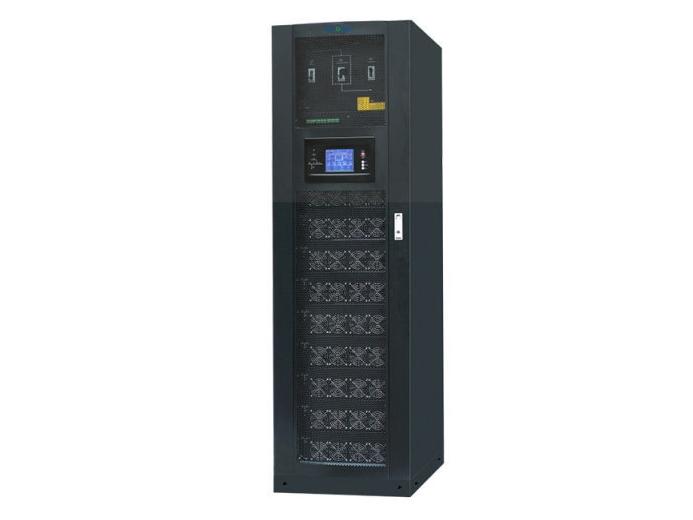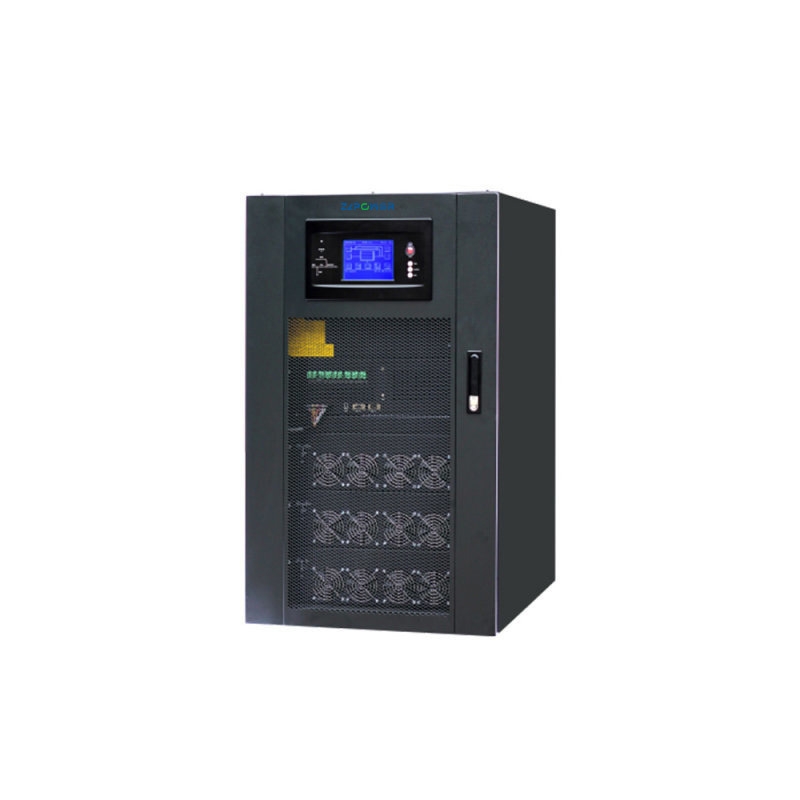

In today’s fast-moving, tech-reliant world, steady power is a must for industries using 3-phase systems. A 100kVA uninterruptible power supply (UPS) acts as a foundation for keeping things reliable, adaptable, and safe from blackouts. Whether you’re overseeing a data center, managing an automated assembly line, or running a medical facility, knowing how a 100kVA UPS tackles key power demands can boost your operational strength.
Single-phase setups send electricity via one alternating current (AC) wave. In contrast, 3-phase systems use three waves, spaced 120 degrees apart, for smoother, more effective energy delivery. This setup suits high-power tasks perfectly. Homes often stick with single-phase power, but 3-phase systems drive big machines and critical setups with better steadiness and less energy waste.
Sectors like manufacturing, data centers, and healthcare lean on 3-phase systems for their intricate gear. Think of a factory’s CNC tools, a server room’s cooling fans, or a hospital’s MRI machines—they all depend on the even load spread that 3-phase power provides.
Blackouts, voltage dips, or harmonic issues can halt work in moments. A 100kVA UPS steps in fast with backup power when the grid fails. It also evens out ups and downs, keeping delicate devices—like factory PLCs or IT servers—up and running.
More than just handling outages, it shields gear from spikes and electrical buzz that can wear it down over time. This mix of keeping things going and guarding equipment makes it a must-have for critical spots.
A 100kVA UPS finds a sweet spot between managing hefty loads and leaving space to grow. It can support 80-90kW of actual power (based on the power factor). That’s strong enough for today’s needs yet lets companies expand without jumping to bigger units right away.
A 100kVA UPS has an inverter (turning DC into AC), big batteries, and a static bypass switch for smooth shifts to grid power when required. Backup features, like parallel setups, kick in if one unit fails. This is crucial for places where every minute offline costs a fortune.
Efficiency matters a lot in UPS systems. Dual-conversion 100kVA models, which constantly adjust power, hit 94-96% efficiency and keep waste low. Line-interactive versions, though, work better for lighter loads and might struggle with 3-phase needs. Picking the best type saves money and helps the planet.
Today’s 100kVA UPS units use IoT tools to give live updates on battery status, load size, and overall health. Alerts for upcoming fixes stop breakdowns. Remote controls also keep loads balanced across all three phases, making the system last longer.
Data centers store massive amounts of info and need nonstop power. A 100kVA UPS cuts risks from outages, saving servers from crashing or losing data. One mid-sized center dodged a $500,000 hit by using its UPS during a 20-minute blackout.
In factories, a stopped conveyor can mess up deliveries and rack up fines. A 100kVA UPS keeps motors and robots going, sticking to production timelines even with power hiccups.
Hospitals have tough rules for power dependability. A 100kVA UPS powers critical tools—like ventilators and surgical gear—meeting codes like IEC 60601 and keeping patients safe.
Make sure your UPS aligns with your system’s voltage (say, 400V in Europe or 208V in the U.S.) and syncs across all three phases. A bad match can cause inefficiencies or harm gear.
How long it lasts depends on the load. At half capacity, a 100kVA UPS might give 15-30 minutes of backup. Full load cuts that time short. Lithium-ion batteries last longer (up to 10 years) and recharge faster than VRLA ones, though they cost more upfront.
For unique demands, look at custom options like ZLPOWER. We build UPS power units to fit specific voltages, load types, and tight spaces, blending smoothly with your 3-phase setup.
Plan regular heat checks to spot hot areas and update firmware for top performance. Clearing dust from vents stops overheating too.
Capacitors and batteries often fail first. Watch for signs like shorter runtime or voltage shifts, and swap them out early.
Trained techs ensure you meet IEC and ISO rules. They do yearly reviews to catch problems early and keep warranties valid.

AI-powered load predictions fine-tune power use. Hybrid setups mix grid, battery, and renewable sources for toughness.
Power-saving modes trim idle use. New recyclable lithium-ion batteries fit eco-friendly aims.
A 100kVA UPS isn’t just a fallback—it’s a key tool for 3-phase systems, locking in uptime, efficiency, and flexibility. Choose the right one and care for it well. Your business can stay secure for years. Ready to get started? Contact us now.
A: Manufacturing, data centers, healthcare, and telecom top the list. They need steady, strong power.
A: It has built-in safeguards. It switches to bypass mode or shuts off safely to avoid damage.
A: Yes, hybrid versions pair with solar inverters. They store extra energy for backup.
A: About 2-5 years. It depends on downtime savings and energy cuts.
A: Yep. Their swappable parts make fixes easy without shutting everything down.